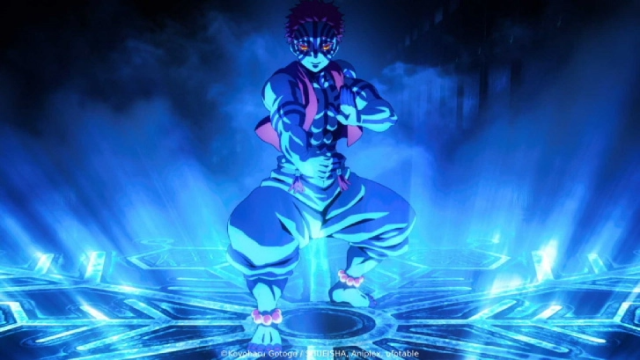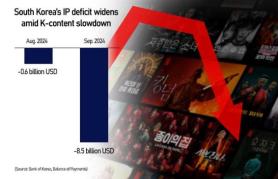
Han Suk-hee, a 27-year-old web novel writer, returned for a second viewing of "Chainsaw Man – The Movie: Reze Arc" after being "bewitched" by the immersive big-screen experience and its dark, kinetic storytelling.
Adapted from Tatsuki Fujimoto's hit manga series, Han said the film captivates far beyond its core anime fanbase.
"People come to experience the perfected mise en scène and the lingering aftertaste," he said. "It's not one of those day-to-day films. The beginning, climax, and finale are all stunning."
Having read the original comic series and watched the Netflix adaptation, Han joins a wave of avid moviegoers driving the surge in so-called "otaku-genre" films in Korea, as the domestic film pipeline remains in the doldrums.
Another Japanese anime sensation, "Demon Slayer: Kimetsu no Yaiba – Infinity Castle," recently became the highest-grossing Japanese film ever released in Korea.
It drew a cumulative 5.63 million viewers as of Tuesday, coming within 30,000 viewers of the year's No. 2 Korean box office title, "My Daughter Is a Zombie." In revenue terms, the Japanese blockbuster has earned 60.4 billion won, more than 7 billion won above the Korean film.
"Demon Slayer" also broke the previous Japanese box office record in Korea, surpassing the 5.58 million cumulative viewers set by "Suzume," until now the most successful Japanese release in the local market.

Meanwhile, "Chainsaw Man: The Movie – Reze Arc" recorded 2.97 million cumulative viewers over the Nov. 7 to 9 weekend, overtaking Park Chan-wook's festival-lauded "No Other Choice," which drew 2.93 million viewers.
The anime has remained a top performer into its eighth week since opening on Sept. 24, buoyed by strong word-of-mouth and steady advanced ticket sales. Repeat viewings by both curious newcomers and longtime fans continue to fuel its resilience.
Industry observers say the two anime films excelled at stoking repeat engagement through post-screening events, brisk sales of film merchandise, and an already solid fanbase built through original comics and globally accessible anime series.
Domestic films, facing a thin and uninspired slate, have struggled to defend their home turf.
The theatrical slump deepened through November and is extending into December, marking a stark reversal from last year. According to the Korean Film Council's first-half industry report published on July 31, total box office revenue fell 33.2 percent from a year earlier to 407.9 billion won, while total admissions declined 32.5 percent to 42.5 million.
Korean films performed even worse. Revenue fell 43.1 percent year on year to 202.3 billion won, and admissions dropped 42.7 percent to 21.36 million. Domestic film revenue share slid 8.8 percentage points to 50 percent, and audience share dropped 9 percentage points to 50.3 percent. The absence of big hits—unlike last year's "Exhuma" and "The Roundup: Punishment," both of which surpassed 10 million admissions—left theaters without strong anchors.

Many analysts link this shift toward fandom-driven and niche content to the explosive growth of global streaming platforms after the pandemic. Streaming fragmented viewer habits by exposing audiences to a far broader range of global content, enabling more refined personal tastes to emerge.
Japanese anime fits neatly into this pattern. Once a subculture sustained by a small group of devoted fans willing to navigate illegal downloads, anime has now entered the mainstream as major titles became easily accessible on platforms like Netflix. Series such as "Demon Slayer" and "Chainsaw Man" are available on virtually every major streaming service operating in Korea.
Critics argue Korean cinema fell into complacency, continuing to churn out broadly targeted films that worked before viewing patterns changed. "Omniscient Reader: The Prophecy," released in late July, is a striking example. Despite its source material—a web novel with 2 billion cumulative global views—the adaptation stripped away much of what energized core fans. Strongly rejected by loyal readers, the film attracted only one-sixth of its 6 million break-even target before exiting theaters.
Copyright ⓒ Aju Press All rights reserved.




